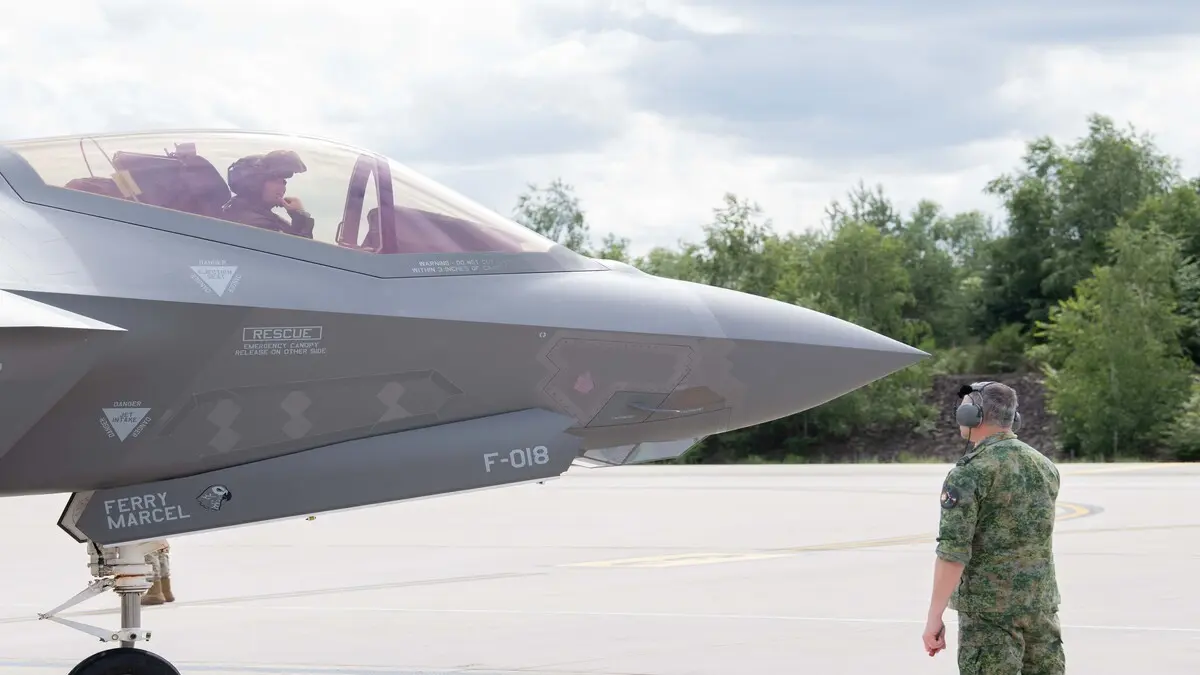“(Amsterdam) – The Royal Netherlands Air Force (RNLAF) and national carrier KLM have formalized a strategic partnership that will allow qualified KLM pilots to serve as reservists and fly the F-35 fighter jet. The agreement, signed today in The Hague, seeks to use civilian aviation expertise to strengthen military pilot capacity and improve interoperability.
Innovative staffing to meet pilot demand
As part of the agreement announced by the Dutch Defense and KLM, selected KLM pilots will be allocated time to receive military training and serve as reservists flying in the RNLAF’s F-35 fleet. This is the first initiative of its kind in Europe, blending civilian airline experience with advanced military aviation roles. The agreement also opens avenues for collaboration in recruitment, technical training and maintenance support.
“The integration of KLM pilots into our F-35 operations “Provides a creative solution to the pilot shortage and ensures continued access to a broad skilled talent base,” said Lieutenant-General Andre Steuer, Chief of Staff of the Royal Netherlands Air Force.

- A KLM Boeing 787-10 (registration PH-BKK) on final approach to Washington Dulles International Airport.
Multi-domain cooperation and career mobility
Under the new framework, qualified KLM pilots will undergo military induction training and be embedded in RNLAF units. Their dual roles are expected to increase surge capacity, especially during NATO exercises or active missions, without the air force facing permanent recruitment challenges.
In return, KLM will be able to provide its technical staff. The F-35A will benefit from enhanced cross-training opportunities and potential access to military technical programs, which will benefit from defense expertise. Joint maintenance and recruitment initiatives are planned for the future.

- Pilots and ground crews from the Leeuwarden F-35 Squadron train at Volkel Air Base as part of a relocation exercise. The Royal Netherlands Air Force currently operates 46 F-35As, with 12 more on order.
Context: Addressing the pilot shortage in military aviation
European air forces – including the Netherlands – are facing a pilot shortage amid growing mission demands and attrition. The RNLAF’s F-35A fleet, which now has 46 more platforms on order, is being trained. A growing cadre of pilots is needed. Meanwhile, KLM’s civilian pilots bring significant experience in advanced avionics and complex air traffic management to the partnership.
Potential for wider Western adoption
This collaboration between a civilian flag carrier and a national air force is attracting interest in NATO. Some defense analysts suggest that similar models could emerge in countries such as Germany and Italy, where pilot retention and training bottlenecks are a constant concern.
KLM CEO Marjan Rintel commented:
“This partnership strengthens both national security and the professional development of our pilots, promoting a unique synergy between commercial and defense aviation.”

Next steps and implementation timeline
The agreement outlines a phased implementation. Pilot selection and certification standards will be finalized in the coming months. Military training courses for the first group of KLM pilots are expected to begin later this year, and operational reservist flights are expected to begin in early 2026.
- Dutch F-35s are operating in Italy.
Strategic implications
- Increased readiness: Dual-qualified pilots can rapidly increase military capability during exercises or emergencies.
- Cost efficiency: This model reduces the pressure on recruitment and training on the defense budget.
- Skills exchange: Civil-military cross-flow increases operational expertise for both sectors.
- NATO blueprint: If successful, this initiative could serve as a model for allied countries seeking to address pilot shortages.
Conclusion
The landmark agreement between KLM and the Royal Netherlands Air Force demonstrates a forward-thinking response to the challenges of the pilot shortage. By combining commercial aviation expertise with military needs, the Netherlands is pioneering a flexible, resilient model to sustain advanced airpower capabilities for NATO and beyond.
Read Next: Pentagon Mulls Equity Stakes in Defense Contractors
FAQs
KLM pilots are joining the Royal Netherlands Air Force (RNLAF) to address the growing pilot shortage in military aviation. Their civilian experience in advanced aircraft, navigation and air traffic management makes them valuable to fly the F-35. By serving as reservists, these pilots enhance military capabilities during exercises, emergencies or NATO missions, while still maintaining their commercial airline careers.
Selected KLM pilots will undergo military induction training and specialized F-35 courses. They will learn advanced combat tactics, air combat maneuvers and military systems integration. The training ensures that they can operate safely alongside regular RNLAF pilots. This dual approach allows them to maintain their commercial flying skills while acquiring military expertise.
Yes. Analysts see the initiative as a potential blueprint for NATO members facing pilot shortages, including Germany and Italy. Civilian pilots bring advanced aviation skills that can complement military operations. If successful, the model could become a trend across Europe to combine commercial aviation skills with national defense needs.
The partnership creates a win-win situation: the air force gets skilled pilots without long-term recruitment pressure, and KLM pilots gain unique military experience. It also allows for technical knowledge exchange, joint maintenance programs, and cross-training. This strengthens national security and can inspire similar collaborations globally, especially in the growing field of civil-military aviation technology.








Leave a Reply